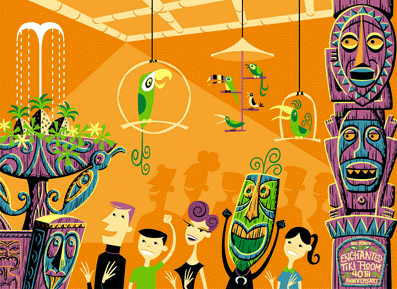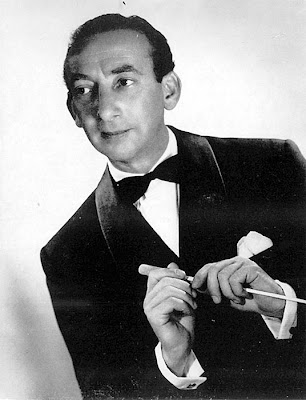 Raymond Scott is awesome. But first, let me clear something up. Raymond didn't write music for the Warner Bros. Looney Tunes cartoons. No, that was Carl Stalling. But Carl 'borrowed' Raymond's themes and such for his scores, in what was considered then an honor and a tribute, but would today be considered a crime and a lawsuit. (Actually Warner Brothers had purchased the rights to the tunes fair and square.)
Raymond Scott is awesome. But first, let me clear something up. Raymond didn't write music for the Warner Bros. Looney Tunes cartoons. No, that was Carl Stalling. But Carl 'borrowed' Raymond's themes and such for his scores, in what was considered then an honor and a tribute, but would today be considered a crime and a lawsuit. (Actually Warner Brothers had purchased the rights to the tunes fair and square.)With that out of the way, because of Carl's scoring work for the WB, you would probably recognize a few of Raymond's more popular works. You'd for sure recognize "Powerhouse" and "Dinner Music for a Pack of Angry Cannibals". You'd probably also be familiar with "The Penguin", "Reckless Night On Board an Ocean Liner", "The Toy Trumpet" and a host of others.
 And of course you'd recognize today's feature, "War Dance for Wooden Indians".
And of course you'd recognize today's feature, "War Dance for Wooden Indians".Raymond was musical adventurist, with a real knack for penning a catchy tune, but he was also a notorious perfectionist. Folks who sat in with him on sessions said he would compose on the piano, playing each instrument's part for them, and the jazz players were supposed to pick up what he was laying down, and nail it quick. And when you listen to how fast the tunes move and how tightly they all fit together, it's amazing that Raymond could project his vision so well.
I have a few recordings of this tune, spanning the century, but I think we'll go with Raymond's original from 1938. The tune kicks off with a stereotypical Native Amercian tom pattern, then into a horn section with some of the horns engaging in a war whoop of sorts, and the others banging out a three-on-two staccato rhythm. Then they break for the main theme, then back into the war whoop. It's followed by a nice horn solo or two, then back to the head.
 Meanwhile, the drums are breaking and rolling nearly the whole time and the horns are honking away on the funky staccato. It's speedy and deliciously funky, especially for the '30s.
Meanwhile, the drums are breaking and rolling nearly the whole time and the horns are honking away on the funky staccato. It's speedy and deliciously funky, especially for the '30s.This version comes from the great compilation Reckless Nights and Turkish Twilights, featuring 22 vintage recordings of Raymond's greatest tunes, as played by his six man 'Quintette'.
[#40]


















































